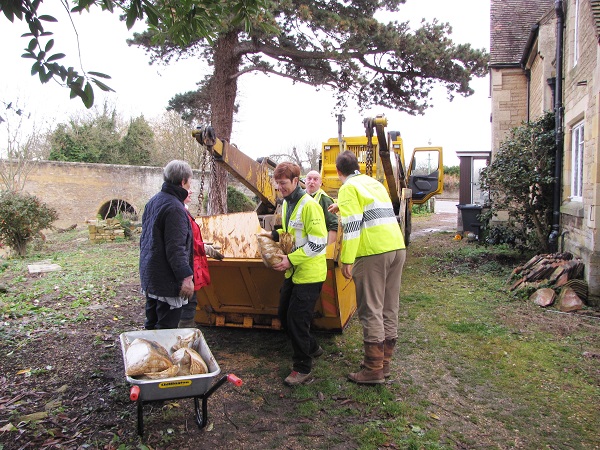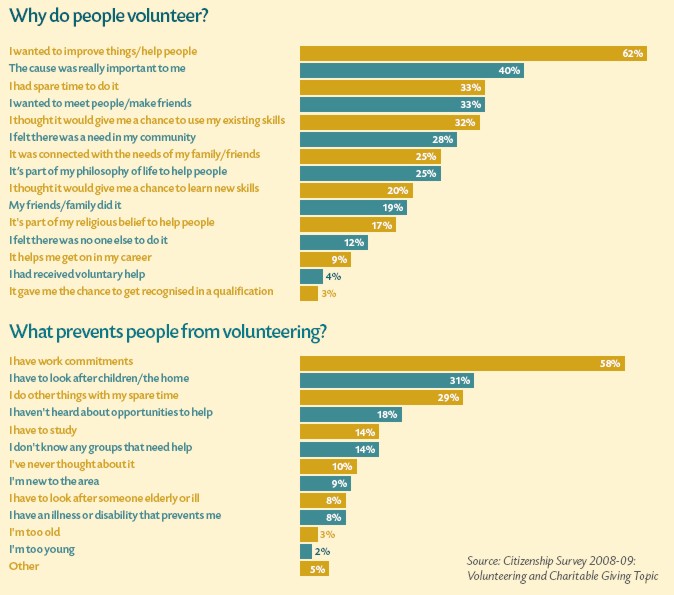2. Fostering ties: why is it important to act?
Collaborative working with communities is important because it can give voice and power to people, and result in a set of wider benefits.

Organising flood protection © Environment Agency
On this page:
Benefits of working collaboratively
Co-operation between flood and coastal erosion risk management authorities is important because of the mutual benefits they can gain from working together and sharing information. The causes of flooding or coastal erosion can cross organisational boundaries and responsibilities (of Local Authorities or water companies for example). Innovative, co-ordinated and sustainable solutions will come from a willingness to co-operate and from
active partnerships between risk management authorities, private landowners, businesses, planning authorities and communities affected.
After severe flooding in Cockermouth during 2009, both residents and the local authority realised that there was an opportunity to bring people together for flood recovery and to prepare for future flooding by working together. Local authority Planning and Development Control Officers linked up with community representatives and built environment professionals to discuss how Cockermouth could be transformed into a more resilient town.
- Watch the Cockermouth video clip telling the story of how a variety of people and interest groups were brought together through the formal planning process. The collaborative group includes officers from across Allerdale Borough Council’s Portfolio as well as voluntary groups, civic trusts and architects.
- See Section 5 above (Further Resources) to read more about how community engagement can help to address issues associated with uneven participation.
Working with communities, particularly the most vulnerable ones, to shape the services that affect their neighbourhoods can increase a sense of ownership and pride, which leads to better, and more sustainable, outcomes1. On a personal level, participation is also known to improve confidence, self-esteem and satisfaction in those involved2.
- See Section 5 above, Further Resources to read accounts about what voluntary participation can offer different groups3,4.
Collaboration within and between organisations may also help to identify new ways to join-up for mutual benefit. Now that responsibility for local public health issues resides with local authorities, there is more opportunity for cooperation across departments, such as with spatial planning, building control, housing and emergency planning, as well as the voluntary and community sector. This can improve understanding of where the most socially vulnerable groups and disadvantaged communities are located and how they can be best engaged5. The new public health arrangements in England are forging new partnerships as well as building on existing ones. This should allow the benefits of partnership working to be extended.
- See the Further Resources in Section 5 (above) for views on the benefits of partnership working between care home staff, GPs, patients and relatives, which can now be extended to building resilience to events like flooding and heatwaves.
Often, centrally imposed plans and solutions may be less effective: it is important not to impose solutions on communities, but to work with them, which can help to build a picture of their concerns and ideas on how to respond6. In the town of Pickering, which suffered flooding in 2007, people in the affected neighbourhoods were involved in a new flood group along with local scientists and modellers. Involving the residents in dialogue with technical expertise from the beginning resulted in outcomes that were judged to be much more effective than relying only on expert knowledge.
- See the Further Resources in Section 5 (above) for more information about how the outcomes were achieved.
Both local and central government in the United Kingdom are being asked to “do more” but with fewer resources. Collaboration between organisations and with communities can help to pool resources and to share risks. Co-operation involves organisations and individuals working together to achieve more effective results than they could achieve through working alone. Co-operation is built on trust, good communication, sharing information and resources, and an improved understanding of the mutual benefits it can bring. Co-operation respects the interests of those concerned, while at the same time promoting the wider interests of the group and its stakeholders. This will enable access to a wider array of skills and assets. Under the Flood Water Management Act (FWMA) 2010, for example, lead local flood authorities are required to operate a partnership funding system and this emphasises the role of local communities and the benefits which can be gained as a result.
- See the Further Resources in Section 5 (above) for views on and examples of partnership working for building flood resilience.
Co-producing services can help to relieve burden and stress on public services, and actively involving those who may be vulnerable within this process can deepen their social networks, which in turn helps to build resilience7. However, the capacities of communities to act and the demands which this places on them also must be recognised and accounted for. Figure 1 shows some of the reasons why people do or don’t volunteer. The findings from the NCVO’s Pathways through Participation project, suggested that people may not feel able to participate due to a lack of time or money, a lack of appropriate skills, knowledge and experience, a lack of available transport or due to having a range of existing responsibilities.
- See the Further Resources in Section 5 (above) for more information about the Pathways to Participation project.

Figure 1: Reasons for participating or not participating with voluntary activities8.
Duties and responsibilities
There are a number of legislative drivers to encourage collaborative working, including for example:
- The Flood and Water Management Act (FWMA) 2010 contains a statutory duty-to-cooperate and, in supplementary guidance, to share data across boundaries and sectors. The exact nature of these partnerships is left to local discretion.
- The Environment Agency and lead local flood authorities will often take the lead for flood and coastal erosion risk management. They will develop, implement and maintain national and local risk management strategies. It is essential that other flood and coastal erosion risk management authorities offer their support if these strategies are to produce effective results. Local strategies in particular will often involve managing different types of flooding. Working together, co-operating and understanding objectives will help all risk management authorities buy-in to the local strategies and the desired results. Other risk management authorities (including district councils, water companies and internal drainage boards) can also take a lead role in cases where managing flood or coastal erosion risk is focused on their responsibilities.
- The Civil Contingencies Act (2004) provides the legislative background for ‘multi-agency emergency plans’. Through local resilience forums and multi-agency flood plans, communities are becoming more involved. These groups are at their most effective when integrated with other public services and agencies – communities need support to achieve their objectives and may need help to support the most socially vulnerable.
- The Health and Social Care Act (2012) requires the development of Joint Strategic Needs Assessments.
-
The Heatwave Plans for England, Scotland and Wales are non-statutory but requires joint-working between the health sector and with a range of other responsible organisations.
- See the Further Resources in Section 5 (above) for more information on roles and responsibilities and other reasons for action.
References
- DCLG (2006) Strong and prosperous communities. The Local Government White Paper.
- Brodie, E., Cowling, E., Nissen, N, Ellis Paine, A., Jochum, V., and Warburton, D (2009) Understanding participation: A literature review.
- Skills for Health (2010) Careers in Healthcare: A Guide to Volunteering in Healthcare Organisations
- Benzie, M., Harvey, A., Burningham, K., Hodgson, N., & Siddiqi, A. (2011). Vulnerability to heatwaves and drought: adaptation to climate change. York, UK: The Joseph Rowntree Foundation.
- Hashagen, S., Kennedy, J., Paterson, A. and Sharp, C. 2011. Doing with, not to: community resilience and co-production [the implications for NHS Education for Scotland, Glasgow: Scottish Community Development Centre.
- Lane, S. N., Odoni, N., Landström, C., Whatmore, S. J., Ward, N. and Bradley, S. 2011. Doing flood risk science differently: an experiment in radical scientific method. Transactions of the Institute of British Geographers, 36: 15–36. doi: 10.1111/j.1475-5661.2010.00410.
- David Boyle, Sherry Clark and Sarah Burns. 2006. Co-production by people outside paid employment. York: Joseph Rowntree Foundation.
- National Council for Voluntary Organisations (NCVO) Participation: trends, facts and figures

Built by:

© 2014 - Climate Just
Contact us
